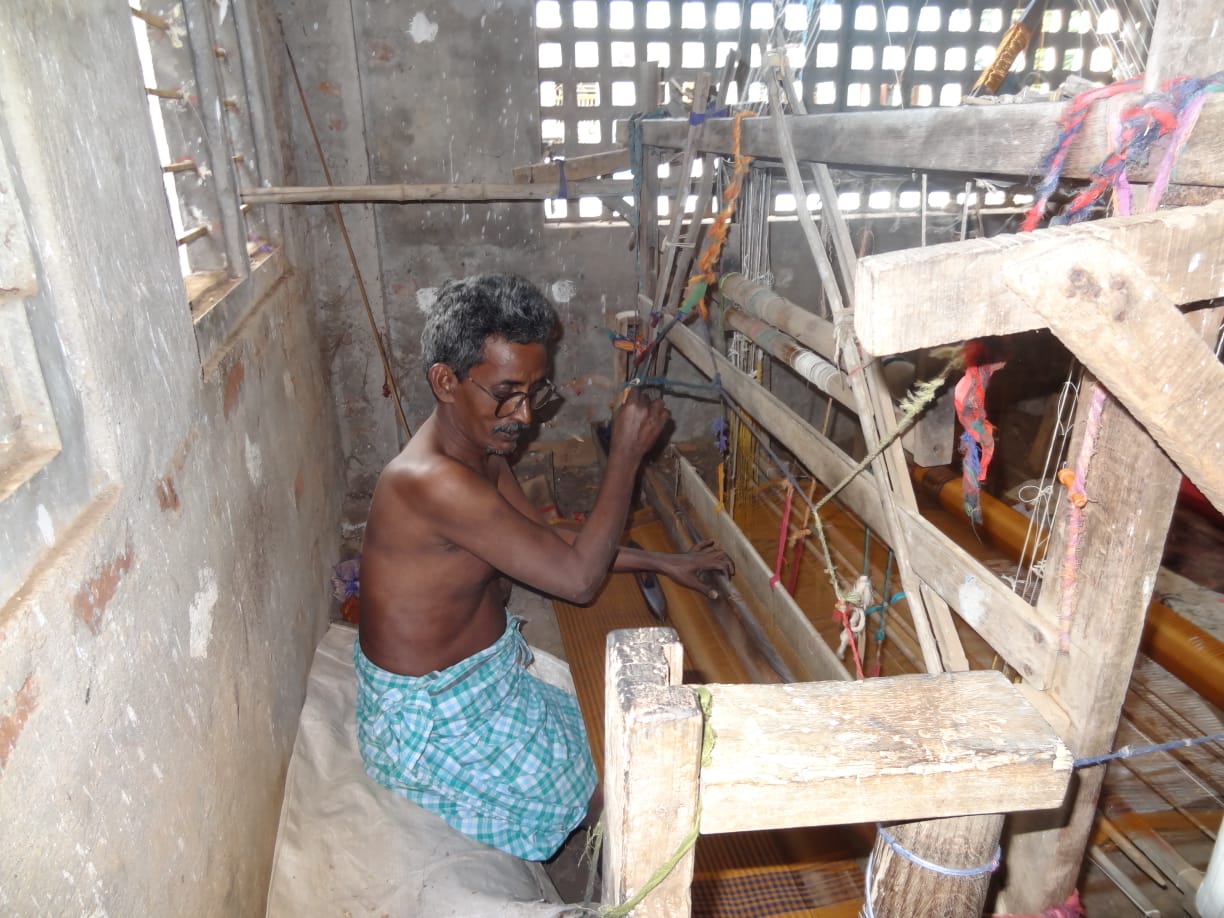The scheme provides life insurance only to weavers aged between 18 and 59 years while many of them are 60 years and above.
Published Aug 18, 2022 | 9:00 AM ⚊ Updated Dec 31, 2022 | 6:34 PM

Senior citizens working in Telangana handloom industry. (Supplied)
“Don’t weavers die after 60?” asked Venkata Narayana, former president and current director of the Bapuji Weavers’ Cooperative society.
The question resonated among the weaver community after the Telangana government announced the ‘Nethanna Ku Bima’ scheme.
It is a ₹5 lakh life insurance scheme for all weavers between the age of 18 and 59 in the state.
In association with the Life Insurance Corporation of India, the government has rolled out the scheme to help an estimated 80,000 handloom and power loom weavers across the state.
However, the weavers are not satisfied with the scheme.
“Is the scheme helpful if it has an age limit of 59? Won’t a weaver die after that? Some weavers in my village are in their 70s. Don’t they deserve the same security?” Narayana, who is himself 71, asked.
Cherala Chandra Mouli, a 55-year-old weaver from Huzurabad in the Karimnagar district, told South First that the weavers have written to the district collector seeking an increase in the age limit for the scheme.
“We are waiting for a positive response from the government. We have also told them that they can reduce the insurance amount from ₹5 lakh to ₹2.5 lakh and let the scheme include every working weaver in the state,” Mouli said.
Chandra Mouli is a Bapuji Handloom Weavers Cooperative Society member and told South First that there are 232 members in his society, out of which 110 are working.
“Only 35 weavers have applied for the Bima, of which 10 are between 50 and 55 years, 15 are over 55 years. The rest are above 59 and yet applied for the scheme.”
Sociology Assistant Professor at the NMIMS Hyderabad Sreerumulu Goshikonda lost his father, Janardhan Goshikonda, in 2017.
“He was a weaver from Rampur village in Huzurabad and died due to paralysis, a common ailment among weavers in Karimnagar and other districts,” he said.
“Even though it’s a household industry, most weavers suffer paralysis in their late 50s due to the continuous leg-and-hand movement required for the work, sometimes for 12 hours a day,” Goshikonda said, and added that there are other weavers in his village who are affected by paralysis.
Another major health concern among the weavers is kidney disease. Many weavers in Karimnagar and Sircilla suffer from various kidney ailments as they sit for prolonged hours on wooden or mud platforms.
Reportedly half a dozen people died from this illness in recent times.
Chandra Mouli said, “We used to have health cards under the ICICI Lombard health insurance scheme. But there have not been any renewals.”
Weavers United Joint Action Committee (JAC) Chairman Suresh Dasu told South First that they had health insurance till 2013-14 but it has expired now. Healthcare has become expensive, so we are made to shell out lakhs even for minor health problems.
“The weavers have to borrow money from micro-financers for healthcare expenses, and they loot them easily. Even the Union government’s ‘Bunkar Bima Yojana’ is not running anymore,” he said.
Meanwhile, Dasu told South First that around 360 weavers have died since the formation of Telangana state.
“We are demanding ₹18 crore from the state government so that the kin of the deceased weavers can get an ex-gratia of ₹5 lakh.”
Goshikonda welcomed the Nethanna Ku Bima scheme. However, he stressed that government should equally focus on helping weavers during their lifetime.
He urged the government to provide subsidies for the weavers.
“The rates of yarn and dye have gone up over the years. So, the subsidies would help the weaver. The government should also increase the base rate per metre saree,” he added.
The amount government pays the weavers’ agency per saree should also be increased, and with this, the quality of saree will also improve,” he added.
